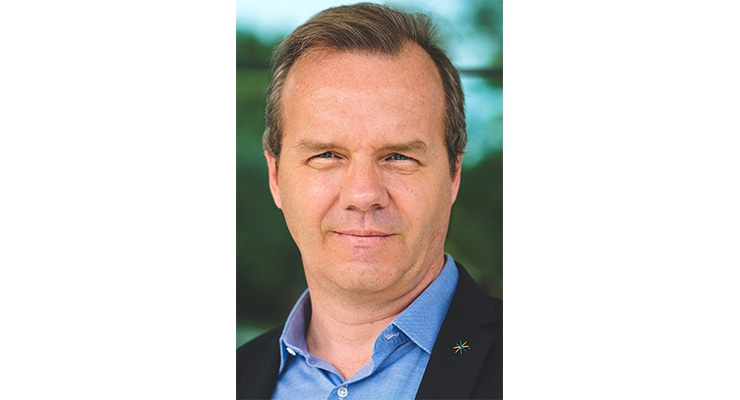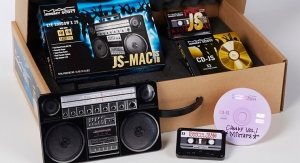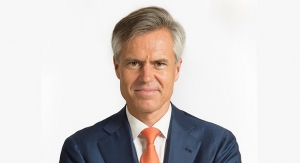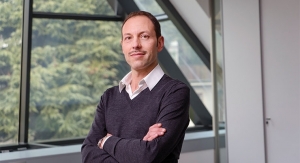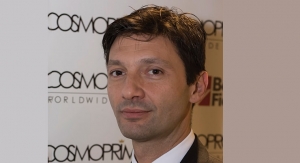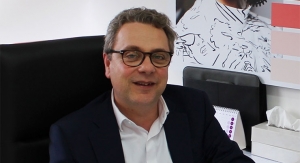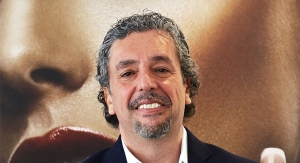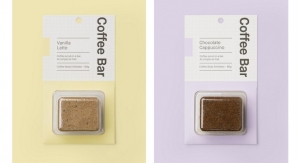02.05.19
Things are changing and changing very quickly. Under the pressure of new environmental standards and given a profound change in mentalities, packaging will face several challenges.
But we must not forget the essential points that packaging has and continues every day to protect and conserve products, thus contributing greatly to the improvement of living standards and safety. Maxime d'Haussy, whose career in this packaging sector is one of the richest (see bio below), provides an overview of the challenges to be met.
Jean-Yves Bourgeois: How, in your opinion, will packaging for the beauty sectors evolve in the coming years?
Maxime d'Haussy: The fundamentals will not change too much: aesthetics and protection of the product will not be called into question.
On the other hand, packaging is and will increasingly be connected. This will make it possible to meet consumers' expectations in terms of information and it will also enable brands to better understand their customers' expectations and desires. Connectivity will allow brands to build big data that will be the basis for increasingly individualized communication.
Brands and their suppliers will also have to continue to make great efforts and investments to make packaging “eco-friendlier.” Cosmetics brands, however luxurious they may be, are not ignorant to the fact that our planet is in danger. Huge efforts have been made in terms of design, but not always in a way that is noticeable to the consumer. This will have to be seen and communicated. Connected packaging will allow this communication by informing consumers, for example, of the carbon footprint generated by the packaging of the product they plan to buy.
Jean-Yves Bourgeois: In relation to this environmental groundswell that will considerably change consumer perception of packaging, should we be pessimistic for this sector or, on the contrary, optimistic about the challenges that will be met? And why is that?
Maxime d'Haussy: I think we have to be optimistic. Pessimism is not a good driver. Only optimism and boldness give sufficient energy to meet challenges.
The environmental challenge should not even be a subject of discussion but a prerequisite every time it comes to designing and producing new packaging. Significant progress has been made in these areas and not a day passes when brands and suppliers do not communicate about their initiatives and innovations.
There will be no miracle solution, but as always, in a Darwinian vision of things, there will be those who adapt and those who disappear. And the same is true for brands and their suppliers.
Luxury will probably have to reinvent some of its standards and the consumers will also clearly express their expectations in their purchasing decisions. In the end, it is the consumer who is the sole judge.
When consumers demand information, the brand will have to provide it in one way or another, with complete transparency. Connected packaging will be a first response to this requirement.
What is certain, is that this will not happen without a substantial investment in rethinking the entire supply chain, from raw materials to the final product, including logistics, relocated production, less water and energy-consuming production, and recyclability. When it comes to providing the means, the Chinese are never very far away!
Jean-Yves Bourgeois: In your opinion, which country is the most technologically advanced in terms of sophisticated packaging? How are Europe and the United States positioned in this area?
Maxime d'Haussy: I would say that France was historically one of the most advanced countries in this field of technologically advanced and sophisticated packaging as the beauty packaging industry has always been an important pillar of the French industry. However, the U.S. has also created a strong high-quality cosmetics market and they demonstrate a very good ability in creating sophisticated packaging and products. In the meantime, we can’t ignore countries like Japan and more recently, South Korea, who also appear to be very creative and innovative. So as a conclusion, it is hard to say if there is a leading country when it comes to creativity and sophistication.
Furthermore, we cannot ignore the phenomenon of globalization, which has led to a significant transfer of some of our know-how to low-cost areas, thus enabling new industrialists to achieve a high level of sophistication.
On the other hand, I think that the degree of sophistication of packaging also has its origin in the culture and developmental stage of the countries. I will try to illustrate my point by taking the case of Brazil, which I know well because I lived there for six years.
Brazil is one of the top 5 global players in the beauty products’ market. But Brazil's level of economic development is far from reaching European, American or Japanese standards. The supply therefore adapts to demand by offering efficient but less sophisticated and less luxurious products to enable the majority to access them. It is therefore important to avoid confusing quality with sophistication. The two are not systematically associated. Brazilian products are of good quality—there is no doubt about that—but they do not yet have the degree of sophistication of products made in France, the U.S. or Japan, for example.
Jean-Yves Bourgeois: Packaging should first and foremost be synonymous with "protection" and "preservation." However, it is too often wrongly considered as "useless." What do you think should be done to reverse this trend?
Maxime d'Haussy: You are absolutely right; the primary functions are the protection and conservation of the product and I think that brands will not deviate from this rule. In addition, the packaging itself makes it possible to make progress in terms of formulation, allowing the products to be less loaded with preservatives and thus allowing the formulas to be more "organic" and "eco-friendly." There is therefore a real interaction between the product and the packaging. Consumers are not fooled either and they do not question the usefulness of packaging.
On the other hand, secondary and tertiary packaging are increasingly being called into question, as they contribute to the image and sophistication of the product rather than to the protection of the product. But here again, things are not that simple. When it comes to a luxury product, often, the purchase is based on very subjective criteria. Let's take the example of Bic perfumes in the mid-1980s. The Naked Perfume. It was a great concept and today it is a real case study. An excellent product and a simple package. Despite the olfactory qualities of the product, it was a resounding commercial failure. For me, there are two reasons for this: 1) a misaligned distribution that departed from luxury standards and; 2) an oversimplified product from which we had removed the dream aspect.
Was BIC too far ahead of its time? Would such a concept be viable today in luxury? That remains to be seen.
Let us take another example that is radically different. What is the purpose of a car? To allow safe travel. To what extent are we willing to strip our cars of what gets in the way of and is not useful and necessary for safe travel? As consumers, we claim a lot about the uselessness of certain things but, and this is the paradox, we are not yet ready to sacrifice everything. This is changing and the younger generations should allow this transition from ultra-consumerist behavior to reasonable consumer behavior. Brands, whatever their sector of activity, will also have to change their tactics.
About Maxime d'Haussy
Maxime d'Haussy began his career in the beauty packaging industry in 1992 at Seaquist Closures (Aptar Group). He immediately became passionate about this business sector. He discovered a very dynamic and creative universe, in constant search of innovation and quality.
In 1995, he seized an opportunity and joined SOFAB (Albea Rexam). This company, originally created by the BIC Group for the launch of the "bare perfume," has successfully converted its manufacturing base to become the inventor and world leader in mini-perfume sprayers known as Sophistic's and Sofilux. It’s an example of how to turn a commercial failure into a success story. He took his first steps in the field of samples.
And, exactly seven years later, Socoplan (Arcade Beauty) offered him the opportunity to work as Sales and Marketing Director in a company exclusively dedicated to samples and mini-products. That was all it took to convince him to expand his knowledge in the fields of Sachets and Thermoform (Blister). In 2007, the group (ILEOS at the time) acquired BIOPACK, the European leader in perfume sampling, and took over its general management in January 2008. After having learned much in the field of care, hygiene and makeup products, he enriched his knowledge in the field of alcoholic products while encountering his first experience as a general manager with what this entails in terms of responsibilities and requirements. In 2013, seeking new horizons, he left for Brazil to take over the direction of Arcade Beauty Mappel.
Interview by Jean-Yves Bourgeois, Beauty Packaging's European Correspondent
But we must not forget the essential points that packaging has and continues every day to protect and conserve products, thus contributing greatly to the improvement of living standards and safety. Maxime d'Haussy, whose career in this packaging sector is one of the richest (see bio below), provides an overview of the challenges to be met.
Jean-Yves Bourgeois: How, in your opinion, will packaging for the beauty sectors evolve in the coming years?
Maxime d'Haussy: The fundamentals will not change too much: aesthetics and protection of the product will not be called into question.
On the other hand, packaging is and will increasingly be connected. This will make it possible to meet consumers' expectations in terms of information and it will also enable brands to better understand their customers' expectations and desires. Connectivity will allow brands to build big data that will be the basis for increasingly individualized communication.
Brands and their suppliers will also have to continue to make great efforts and investments to make packaging “eco-friendlier.” Cosmetics brands, however luxurious they may be, are not ignorant to the fact that our planet is in danger. Huge efforts have been made in terms of design, but not always in a way that is noticeable to the consumer. This will have to be seen and communicated. Connected packaging will allow this communication by informing consumers, for example, of the carbon footprint generated by the packaging of the product they plan to buy.
Jean-Yves Bourgeois: In relation to this environmental groundswell that will considerably change consumer perception of packaging, should we be pessimistic for this sector or, on the contrary, optimistic about the challenges that will be met? And why is that?
Maxime d'Haussy: I think we have to be optimistic. Pessimism is not a good driver. Only optimism and boldness give sufficient energy to meet challenges.
The environmental challenge should not even be a subject of discussion but a prerequisite every time it comes to designing and producing new packaging. Significant progress has been made in these areas and not a day passes when brands and suppliers do not communicate about their initiatives and innovations.
There will be no miracle solution, but as always, in a Darwinian vision of things, there will be those who adapt and those who disappear. And the same is true for brands and their suppliers.
Luxury will probably have to reinvent some of its standards and the consumers will also clearly express their expectations in their purchasing decisions. In the end, it is the consumer who is the sole judge.
When consumers demand information, the brand will have to provide it in one way or another, with complete transparency. Connected packaging will be a first response to this requirement.
What is certain, is that this will not happen without a substantial investment in rethinking the entire supply chain, from raw materials to the final product, including logistics, relocated production, less water and energy-consuming production, and recyclability. When it comes to providing the means, the Chinese are never very far away!
Jean-Yves Bourgeois: In your opinion, which country is the most technologically advanced in terms of sophisticated packaging? How are Europe and the United States positioned in this area?
Maxime d'Haussy: I would say that France was historically one of the most advanced countries in this field of technologically advanced and sophisticated packaging as the beauty packaging industry has always been an important pillar of the French industry. However, the U.S. has also created a strong high-quality cosmetics market and they demonstrate a very good ability in creating sophisticated packaging and products. In the meantime, we can’t ignore countries like Japan and more recently, South Korea, who also appear to be very creative and innovative. So as a conclusion, it is hard to say if there is a leading country when it comes to creativity and sophistication.
Furthermore, we cannot ignore the phenomenon of globalization, which has led to a significant transfer of some of our know-how to low-cost areas, thus enabling new industrialists to achieve a high level of sophistication.
On the other hand, I think that the degree of sophistication of packaging also has its origin in the culture and developmental stage of the countries. I will try to illustrate my point by taking the case of Brazil, which I know well because I lived there for six years.
Brazil is one of the top 5 global players in the beauty products’ market. But Brazil's level of economic development is far from reaching European, American or Japanese standards. The supply therefore adapts to demand by offering efficient but less sophisticated and less luxurious products to enable the majority to access them. It is therefore important to avoid confusing quality with sophistication. The two are not systematically associated. Brazilian products are of good quality—there is no doubt about that—but they do not yet have the degree of sophistication of products made in France, the U.S. or Japan, for example.
Jean-Yves Bourgeois: Packaging should first and foremost be synonymous with "protection" and "preservation." However, it is too often wrongly considered as "useless." What do you think should be done to reverse this trend?
Maxime d'Haussy: You are absolutely right; the primary functions are the protection and conservation of the product and I think that brands will not deviate from this rule. In addition, the packaging itself makes it possible to make progress in terms of formulation, allowing the products to be less loaded with preservatives and thus allowing the formulas to be more "organic" and "eco-friendly." There is therefore a real interaction between the product and the packaging. Consumers are not fooled either and they do not question the usefulness of packaging.
On the other hand, secondary and tertiary packaging are increasingly being called into question, as they contribute to the image and sophistication of the product rather than to the protection of the product. But here again, things are not that simple. When it comes to a luxury product, often, the purchase is based on very subjective criteria. Let's take the example of Bic perfumes in the mid-1980s. The Naked Perfume. It was a great concept and today it is a real case study. An excellent product and a simple package. Despite the olfactory qualities of the product, it was a resounding commercial failure. For me, there are two reasons for this: 1) a misaligned distribution that departed from luxury standards and; 2) an oversimplified product from which we had removed the dream aspect.
Was BIC too far ahead of its time? Would such a concept be viable today in luxury? That remains to be seen.
Let us take another example that is radically different. What is the purpose of a car? To allow safe travel. To what extent are we willing to strip our cars of what gets in the way of and is not useful and necessary for safe travel? As consumers, we claim a lot about the uselessness of certain things but, and this is the paradox, we are not yet ready to sacrifice everything. This is changing and the younger generations should allow this transition from ultra-consumerist behavior to reasonable consumer behavior. Brands, whatever their sector of activity, will also have to change their tactics.
About Maxime d'Haussy
Maxime d'Haussy began his career in the beauty packaging industry in 1992 at Seaquist Closures (Aptar Group). He immediately became passionate about this business sector. He discovered a very dynamic and creative universe, in constant search of innovation and quality.
In 1995, he seized an opportunity and joined SOFAB (Albea Rexam). This company, originally created by the BIC Group for the launch of the "bare perfume," has successfully converted its manufacturing base to become the inventor and world leader in mini-perfume sprayers known as Sophistic's and Sofilux. It’s an example of how to turn a commercial failure into a success story. He took his first steps in the field of samples.
And, exactly seven years later, Socoplan (Arcade Beauty) offered him the opportunity to work as Sales and Marketing Director in a company exclusively dedicated to samples and mini-products. That was all it took to convince him to expand his knowledge in the fields of Sachets and Thermoform (Blister). In 2007, the group (ILEOS at the time) acquired BIOPACK, the European leader in perfume sampling, and took over its general management in January 2008. After having learned much in the field of care, hygiene and makeup products, he enriched his knowledge in the field of alcoholic products while encountering his first experience as a general manager with what this entails in terms of responsibilities and requirements. In 2013, seeking new horizons, he left for Brazil to take over the direction of Arcade Beauty Mappel.
Interview by Jean-Yves Bourgeois, Beauty Packaging's European Correspondent

